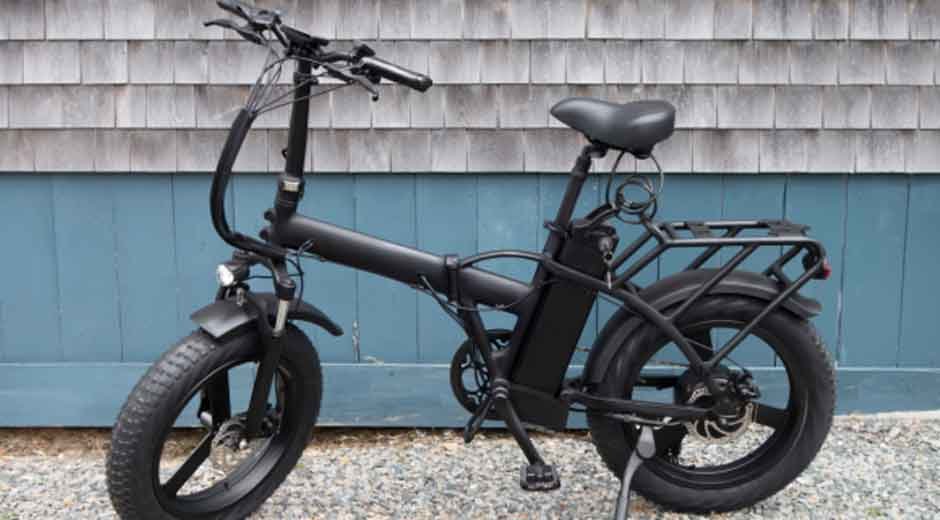Ready for a new way to explore Canada? From city bike lanes to rugged mountain trails, an eBike can make every ride smoother and way more fun. But with so many styles out there, choosing the right one can feel confusing. Each type has its own strengths: some are perfect for daily commuting, while others are built to handle steep climbs or snowy paths.
In this blog, you’ll learn how to match your riding needs with the best eBike style for your Canadian adventures. So you can travel, stay comfortable, and enjoy every moment on two wheels.
Understanding eBike Classifications and Canadian Regulations
Dropping serious cash on an eBike when you can’t legally ride it? Not ideal. Canada’s rules get messy since each province does its own thing.
Federal and Provincial eBike Laws
Here’s the standard deal across most provinces: 500 watts max, speed capped at 32 km/h. Throttle-assist gets the green light in some spots, while others say pedal-assist only. Ontario’s pretty chill about it. Quebec? Stricter on riding locations. BC wants you at least 16 before hopping on.
License and insurance typically aren’t required for regular eBikes. Helmets depend on where you are. Just double-check your local rules.
Motor Types and Power Systems
Hub motors hide inside your wheels. Quiet, straightforward, perfect for flat rides, but hills expose their weakness fast. Mid-drive motors live near your pedals, delivering superior balance and climbing muscle. Pricier, sure, but mandatory if rock mountain trails are calling your name.
Battery size? Matters more than you think. Winter cold absolutely murders your range, we’re talking 20-30% drops. Bigger batteries aren’t optional for Canadian winters.
Complete Types of eBikes Guide for Canadian Riders
The types of eBikes out there can basically handle whatever crazy plan you’ve cooked up. Exploring options alongside an electric scooter canada can also open up new ways to experience both urban and off-road environments with ease and sustainability. The key is choosing the right ride that fits your lifestyle, one that turns every journey into an exciting, eco-friendly adventure through Canada’s stunning outdoors.
Fat Tire eBikes for Winter Riding
These monsters crush snow, sand, mud, basically everything, with tires sitting at 4+ inches wide. Surprisingly, they work great all year. Just know batteries hate extreme cold, so warm storage between rides helps big time. Neoprene covers work too.
Modern city commuters have options beyond traditional bikes now. Specialized Canadian retailers stock what you need, and checking out selections beside electric scooter canada options helps clarify which features actually matter for your daily grind.
Mountain eBikes for Trail Adventures
Full-suspension eMTBs? They’ll smooth out gnarly trails whether you’re at Whistler or exploring the Canadian Shield. Hardtails save you money and totally work for moderate terrain. Going serious with climbs means hunting down 500W minimum motors.
Wide rubber, think 2.3 inches minimum, plus hydraulic disc brakes aren’t negotiable if you value your bones. Most Canadian trails welcome eBikes now, though some holdouts still ban them.
Commuter and City eBikes
Step-through designs mean you’re not awkwardly climbing over frames in work clothes. Integrated lights, fenders, racks, you’ll actually thank yourself later. Toronto and Vancouver theft rates are real, so grab a beefy U-lock and maybe GPS tracking.
After running through seven main categories, the real question hits: which one actually works for your specific slice of Canada, from coastlines to mountain passes?
Matching eBike Types to Canadian Terrain
Geography changes everything when choosing an eBike. Saskatchewan winners won’t necessarily hack it in BC.
Region Considerations
Elevation gain demands serious torque. Mid-drive motors packing 80+ Nm ratings conquer steep climbs way better. Altitude tanks your battery range, so build in a buffer. Alberta and BC deliver incredible eBike trails when you match the right bike to the job.
Prairie and Flatland Optimization
Wind becomes enemy number one on the prairies. Aerodynamic road eBikes with chunky batteries eat those long distances. Gravel capability matters when you’re exploring rural areas and pavement just… ends.
Atlantic Canada Coastal Conditions
Salt air destroys electronics mercilessly. Hunt down sealed components and corrosion-fighting materials. Fenders aren’t optional, they’re survival gear for constant wet conditions. Humid climate also messes with battery storage. Keep it indoors, seriously.
Regional terrain knowledge is half the battle, Canada’s wild seasonal swings mean you need bikes that perform year-round.
Seasonal eBike Selection for Year-Round Canadian Riding
Hospitals nationwide saw collision injuries spike recently involving e-scooters and e-bikes, more than ever recorded. Makes picking proper seasonal gear pretty critical.
Winter eBiking Essentials
Studded tires grip ice like nothing else. Battery insulation sleeves keep performance alive when temperatures drop hard. Waterproofing fights road salt’s relentless corrosion. Lots of riders haul batteries indoors overnight during deep freezes.
Frame geometry counts too, lower center of gravity keeps you upright on slippery death traps.
Spring and Fall Transitions
Mudguards become mandatory when snow melts or leaves pile up. Weather roulette means needing storage for layering. Daylight shrinks fast, making killer lighting non-negotiable for visibility.
Once you’ve nailed the right eBike type for your terrain and seasons, it’s spec time, separating winners from disappointments.
Canadian eBike Buying Guide: Key Features
Shopping for the best eBikes for Canada means knowing which numbers actually mean something.
Battery Technology and Range
Watt-hours (Wh) control how far you roll. City commuters manage fine with 400Wh. Adventure seekers want 600Wh minimum. Temperature hammers performance hard, winter drops 20-30% off your range consistently.
Charging takes 3-6 hours usually. Spare batteries work for long hauls, but they’ll hurt your wallet.
Frame Materials and Durability
Aluminum frames deliver the best value for Canadian punishment. They handle freeze-thaw cycles better than carbon fiber and dodge rust unlike steel. Corrosion resistance pays off facing winter road salt bombardment.
Component Quality Matters
Hydraulic disc brakes perform reliably regardless of weather chaos. Sealed bearings block moisture and grit. Suspension systems need cold-weather functionality, cheap ones freeze up and quit.
Armed with feature knowledge and specs, let’s translate requirements into actual budget ranges delivering real value.
Canadian eBike Incentives and Rebates
British Columbia throws up to $1,400 at qualifying eBikes. Quebec runs similar programs aimed at lower-income folks. Your municipality might kick in more, Victoria adds extra incentives.
Federal programs fluctuate, so verify what’s current. Corporate bike-to-work setups might score you tax breaks through employers.
With savings identified through rebates, your next move finds reputable retailers offering expert help, proper sizing, and solid after-sale support.
Finding the Right Canadian Retailer
Local dealers provide test rides and sizing, both absolutely crucial for comfort. They handle warranty headaches without shipping nightmares. Online saves money but ditches personalized experience completely.
Canadian eBike communities on Facebook and Reddit dish honest reviews and local trail intel. Provincial groups offer weather-specific wisdom worth its weight.
Final Thoughts on Your Canadian eBike Journey
eBiking in Canada opens incredible doors for adventure, commuting, and exploring massive landscapes. Whether you’re crushing mountain trails, cruising city streets, or hauling cargo, your perfect match exists.
Remember, the best eBike isn’t always the priciest one. It’s whatever fits your lifestyle, terrain, and budget naturally. Test ride several models before committing, and definitely factor in Canadian weather realities when deciding. Your perfect adventure machine is waiting to completely transform how you experience this stunning country.
Common Questions About Choosing eBikes in Canada
Do I need a license to ride an eBike in Canada?
Most provinces skip license requirements for standard eBikes under 500W and 32 km/h. Some enforce minimum ages, usually 16. Always verify your specific provincial rules before buying.
Can I ride my eBike during Canadian winters?
Absolutely! Fat tire eBikes with studded tires handle snow beautifully. Keep batteries warm, indoor storage and insulation covers help. Expect reduced range, typically 20-30% less than summer riding.
What range should I expect in real Canadian conditions?
Manufacturer numbers are fantasy. Realistically, plan for 40-80 km depending on terrain, temperature, wind, and your weight. Winter slashes this further, so plan conservatively or grab higher-capacity batteries.













